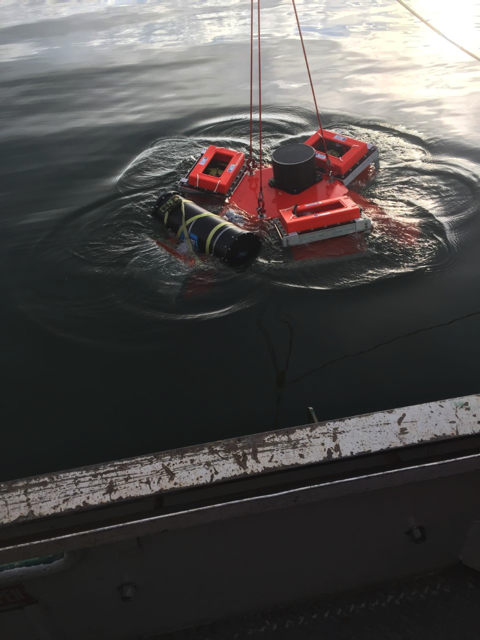Little is known about the large-scale movement patterns of Great Lakes fishes. Though it is understood that large migrations of fish typically occur along regions of Lake Superior during spawning events, the timing and potential drivers of these events are not well understood. Better understanding the timing and drivers of these events is important for more effective management of these fisheries.
Typically, hydroacoustic surveys are used to collect these data, estimating fish biomass and abundance by surveying the water column using one or more acoustic transducers and receivers attached to a vessel (think of a fish finder on your boat, but much more sensitive). Hydroacoustic data are then collected along a pre-determined set of transect on the waterbody. Detections of targeted species are then integrated across the survey to determine biomass and abundance of fish in a region. Although effective, these methods are costly and require significant ship time, which can be challenging to fund.
Stationary bioacoustic surveys have begun to show promise for estimating regional abundance of fishes (DeRobertis et al. 2018), but these methods have not been tested in freshwater environments.
In this project, we will use stationary hydroacoustics surveys in Lake Superior to evaluate: 1) overall biomass and abundance estimates in several regions to compare this methodology against mobile surveys; and 2) use these deployments to better understand patterns and timing of movement of large spawning aggregations in the lake.

For more information, please contact Dr. Mike Rennie.
